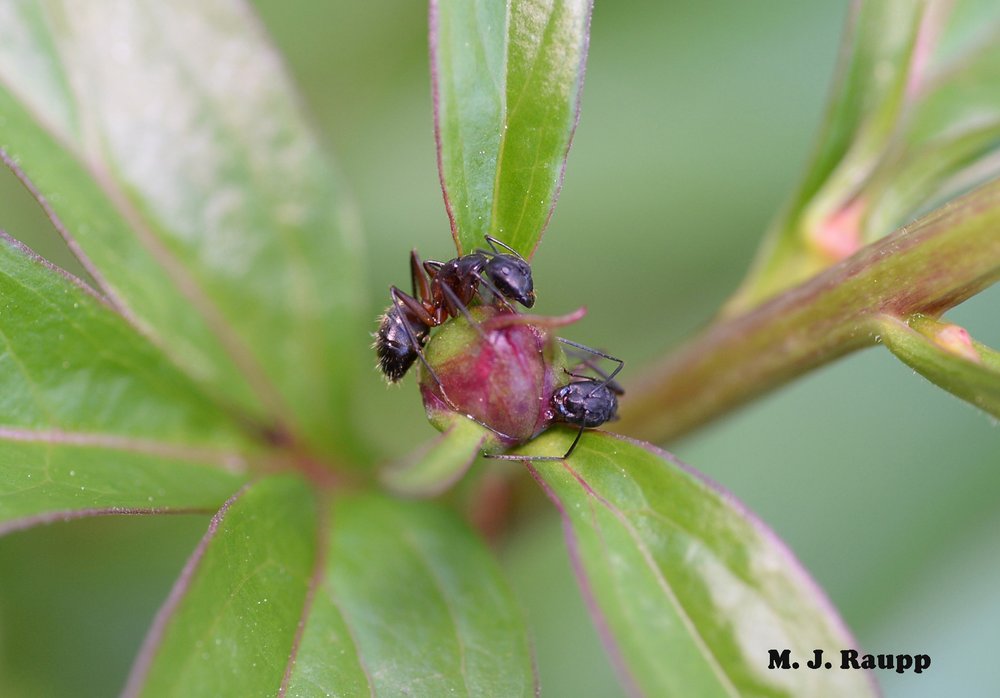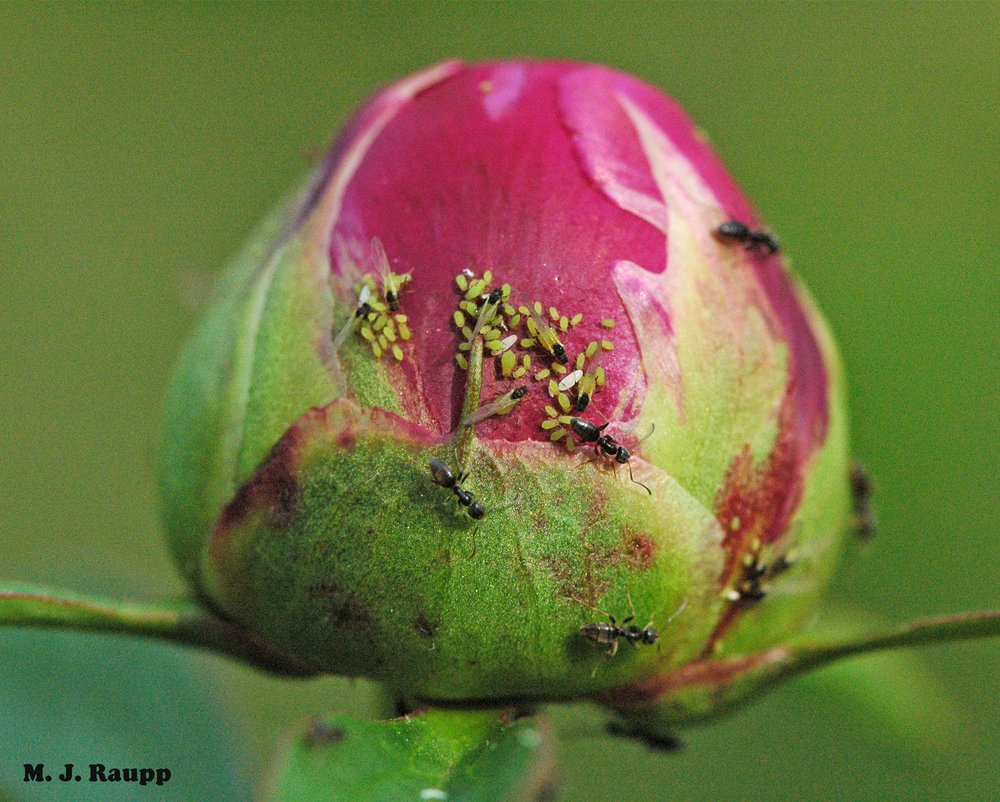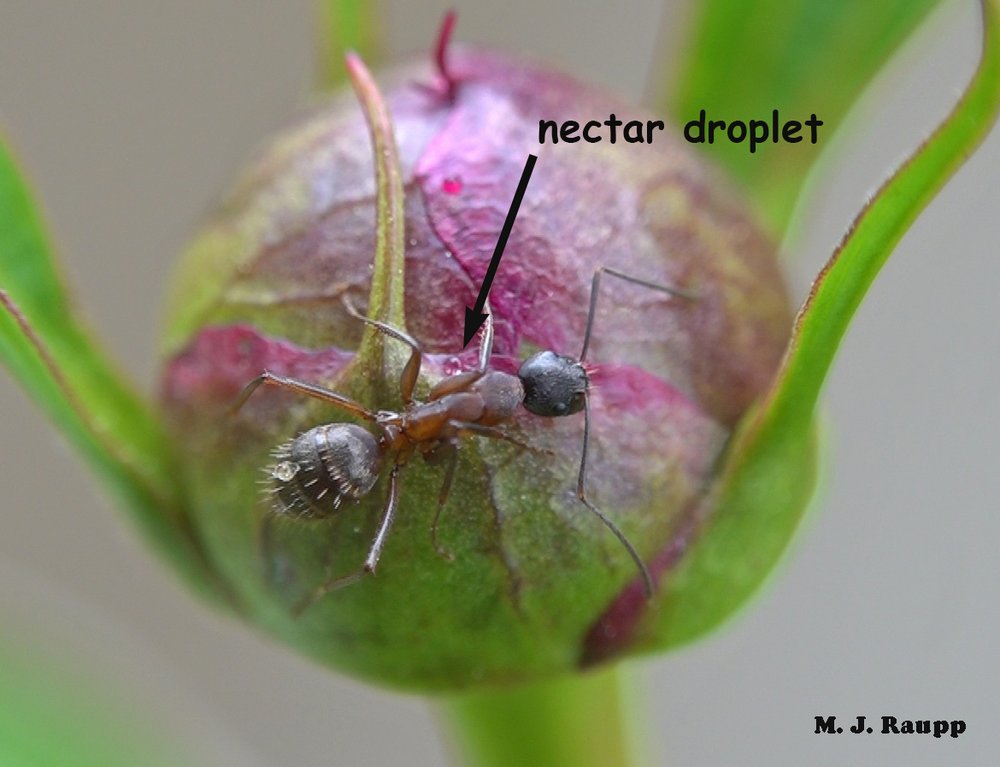Nectar rewards for peony protecting body guards: Carpenter ants, Camponotus spp.

Are ants really necessary for peonies to bloom?

Given a choice between tending a herd of sap-sucking aphids for their honeydew reward or protecting the peony bud from aphids, the ants are going with the aphids.
One gardening legend has it that peonies don’t flower without the assistance of ants. Well, the editors of the Old Farmer’s Almanac recently busted the myth that ants “tickle the buds” to get peonies to blossom. As they point out, peonies definitely will bloom just fine in the absence of ants. Well, if ants are not helping the buds open, what are they doing? A closer look reveals that plants are clever. They have evolved astounding arsenals of sophisticated defenses to thwart hungry jaws of caterpillars and beetles and the sap-sucking beaks of aphids, scale insects and their kin. Tough leaves, rugged bark, spines, thorns, hooked hairs that snare trespassers, and a veritable warehouse of noxious chemicals designed to poison herbivores protect leaves, stems, and roots of plants. But one of the most elegant defenses in the plant-world involves bodyguards. Yes, plants “hire” insects to protect their tender tissues from ravages of hungry herbivores.

A close look at the peony reveals a drop of nectar secreted by the peony as a reward for guarding the bud.
In previous episodes we met Pseudomyrmex ants, protectors of the bull-horn acacias in which they live. You may recall that at the base of acacia leaves specialized glands called extrafloral nectaries produce sugar-rich nectar, the source of carbohydrates for the ant colony living in the tree. In return for nectar and other nutrients provided by acacia, ants protect their host trees in a deal crafted eons ago by Mother Nature. While fooling around with acacia ants, I learned how potent their defense can be when one delivered a memorable sting. Many trees and shrubs commonly found in our landscapes, including cherry and peach trees, have similar extrafloral nectaries that attract ants and so do the peonies that grow in our gardens. In addition to defense, scientists hypothesize that nectar produced by these glands may simply be a waste product excreted by the plant. Another possibility is that nectar produced by glands on the plant but away from flowers, may lure ants away from blossoms where they might rob floral nectar used to attract pollinators vital for the plant’s reproduction.
To explore the defense hypothesis, I placed a rather large eastern tent caterpillar on a leaf close to several carpenter ants dancing about on a flower bud. As you will see by watching the video, the ants wasted no time attacking the intruder and chasing it from the peony. Just what you would expect any good bodyguard to do. Although ants might not be needed to tickle open the buds of peonies to help them bloom, perhaps by keeping bud and flower-munching insects off the plant, they still play an important role in helping peonies thrive and bring their elegant displays to our gardens.
Do ants really protect peonies from herbivores? Watch as carpenter ants on the flower bud and leaves show an intruding caterpillar the way off the peony plant, taking the valiant defender with it. With the intruder gone, looks like mission accomplished by peony protecting ants.
Acknowledgements
Bug of the Week thanks Dr. Shrewsbury and the editors of the Almanac for providing the inspiration for this episode. The encyclopedic “Insect Ecology” by Peter Price, Robert Denno, Micky Eubanks, Debby Finke, and Ian Kaplan and was used as a reference for this episode.
This post appeared first on Bug of the Week